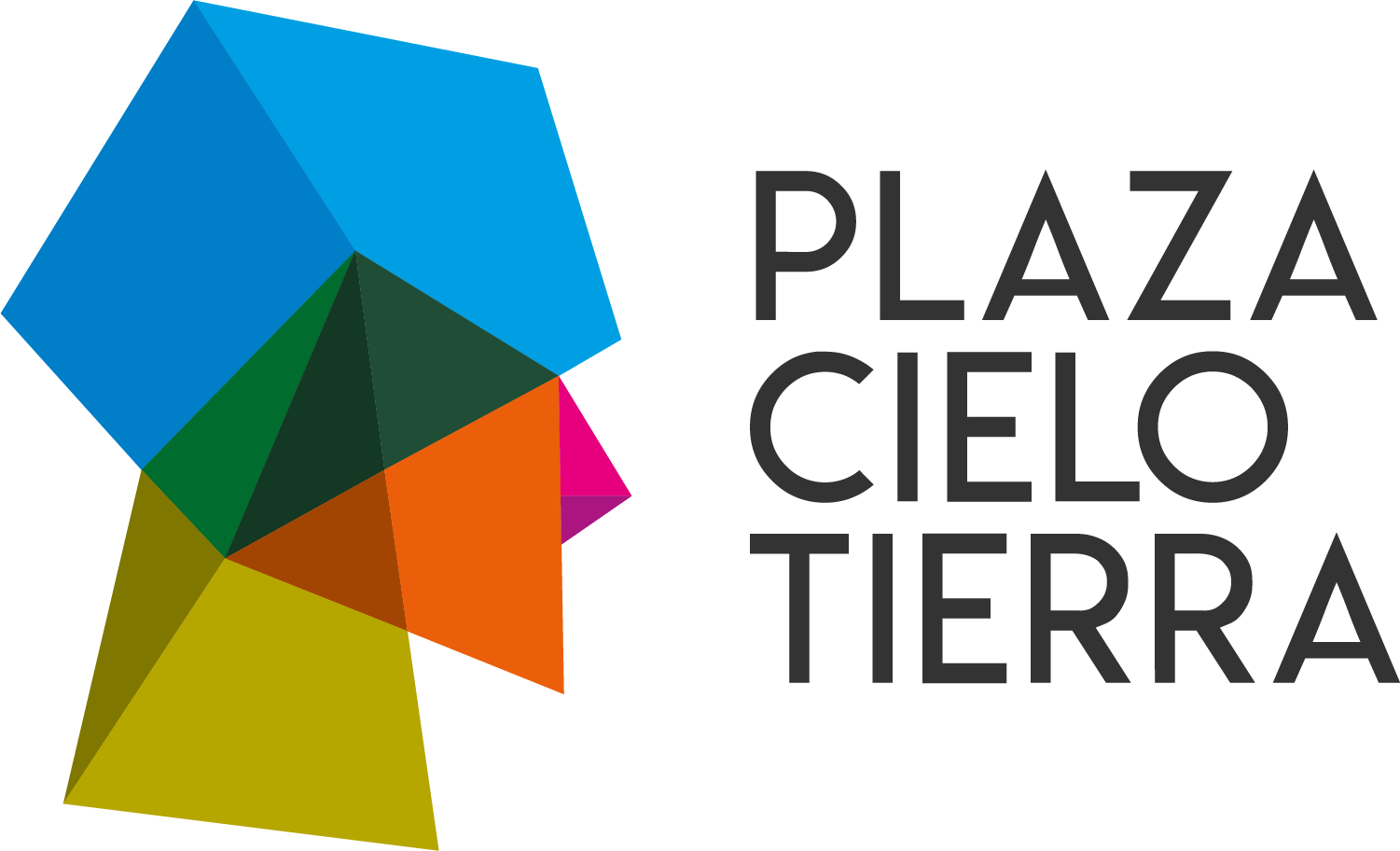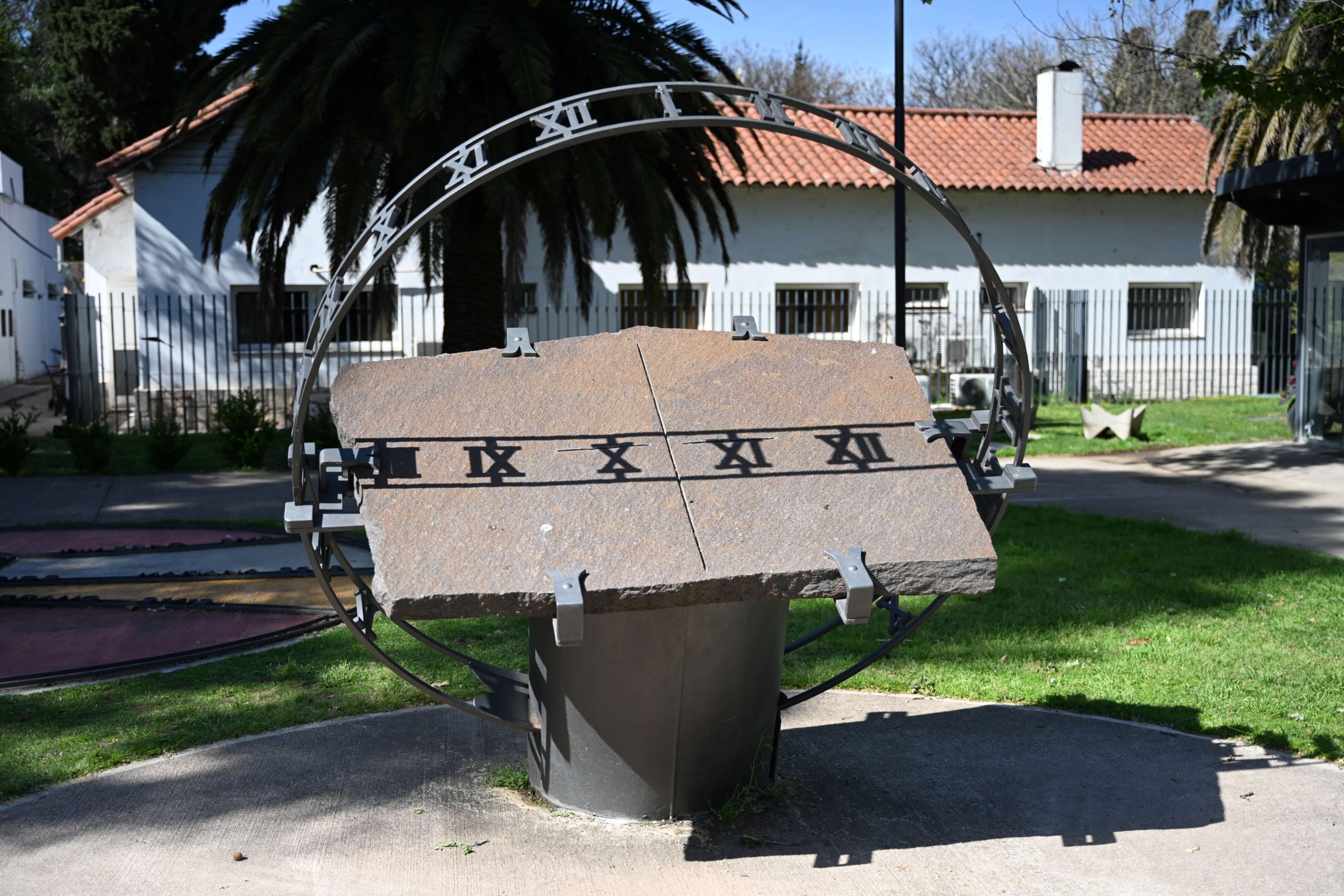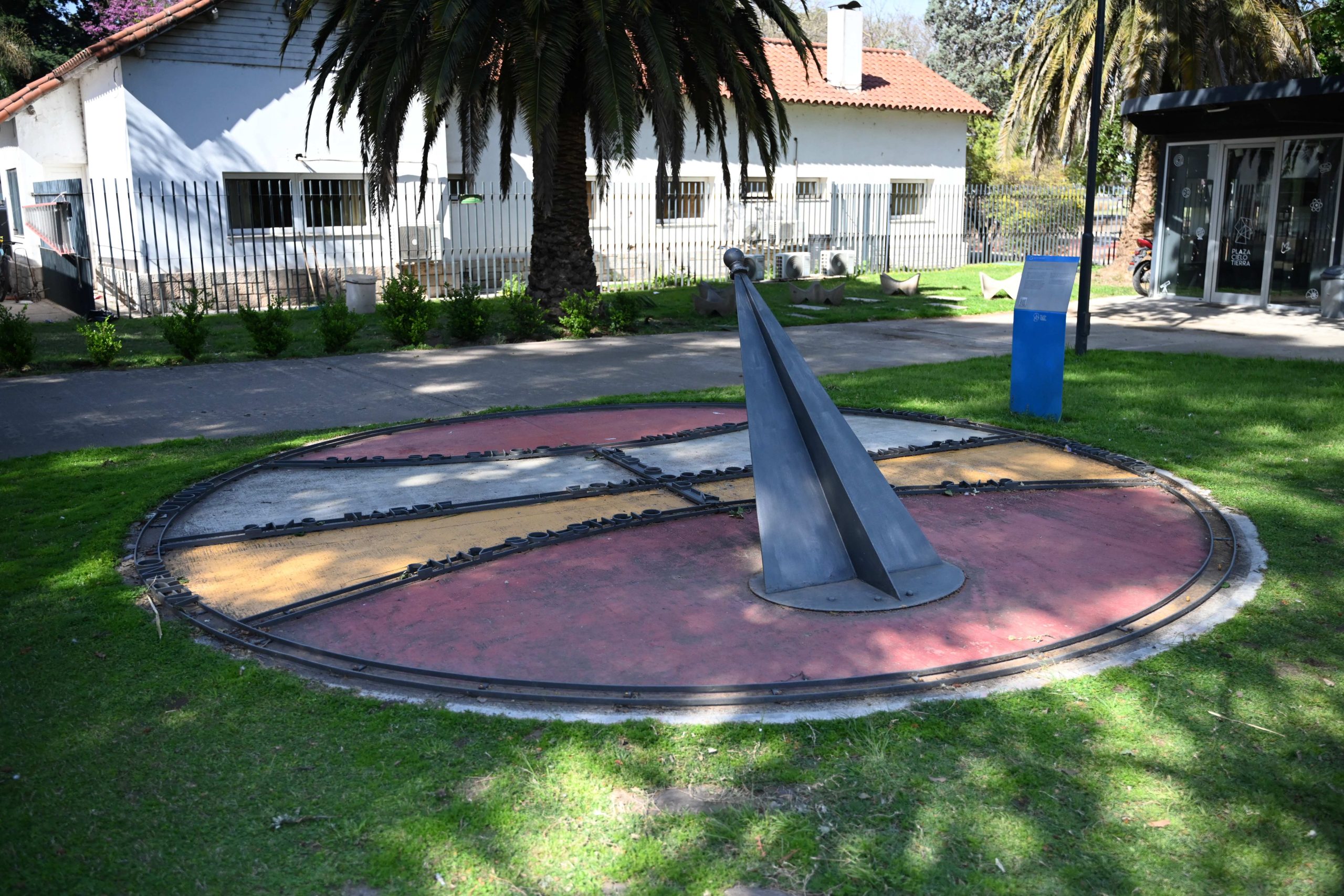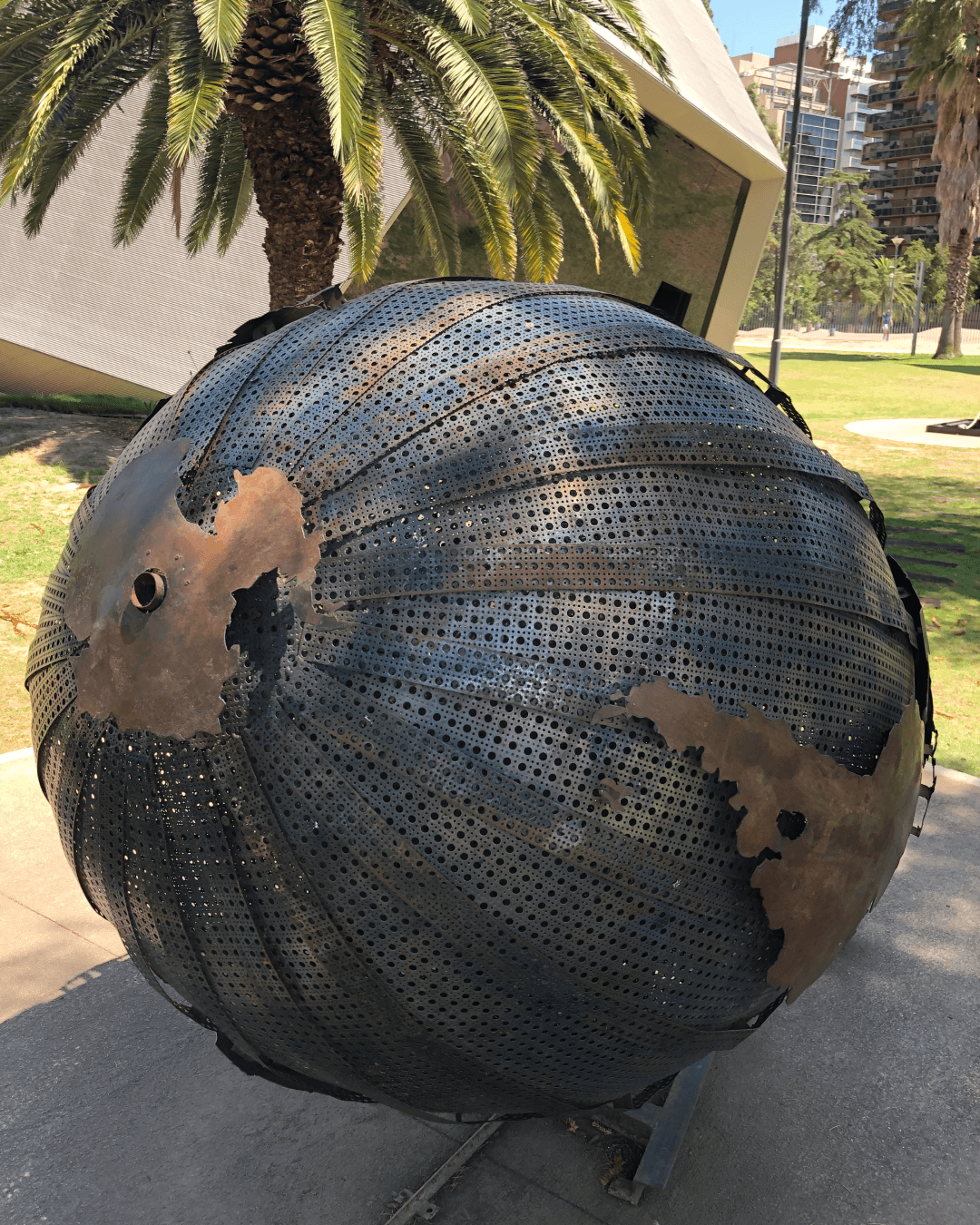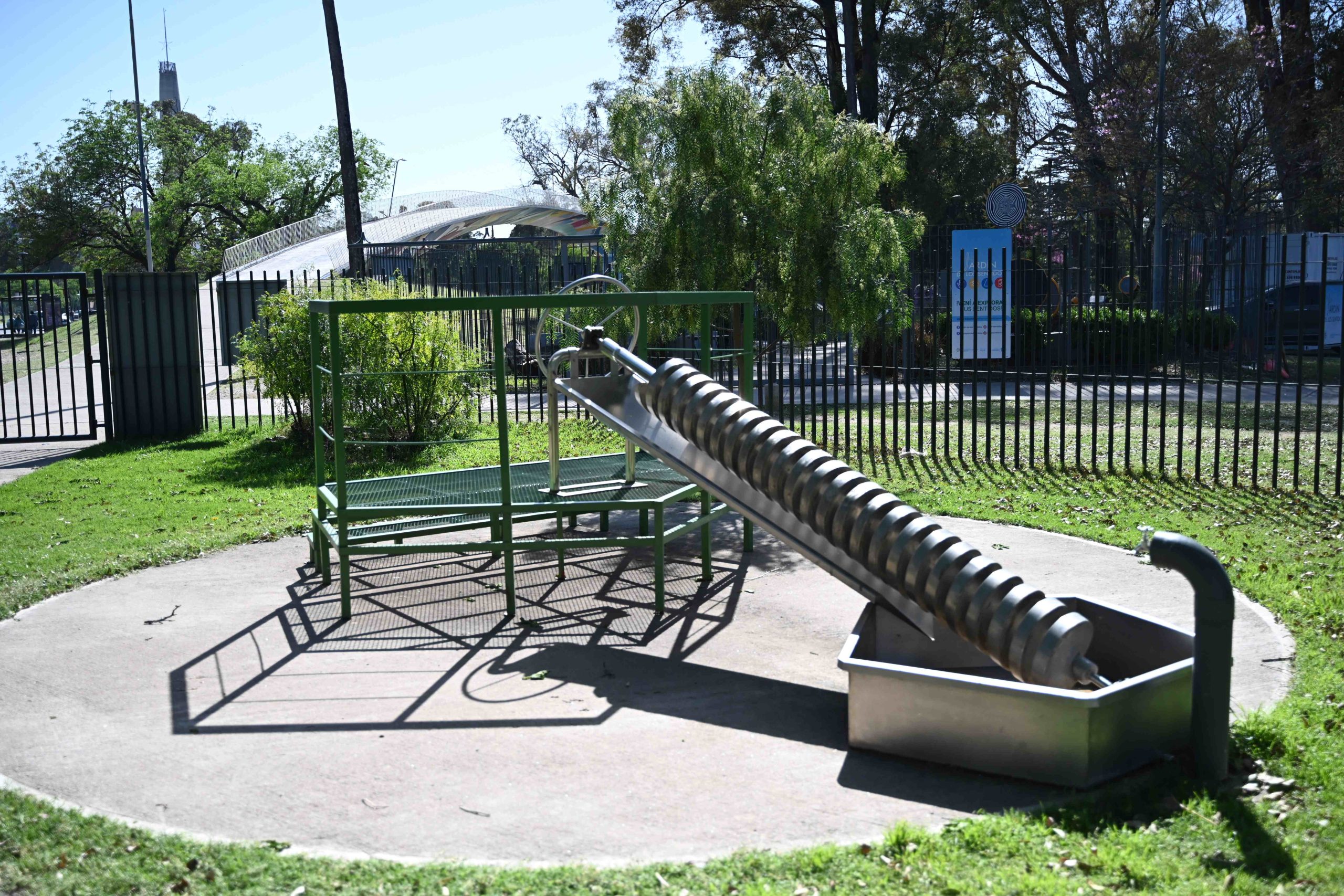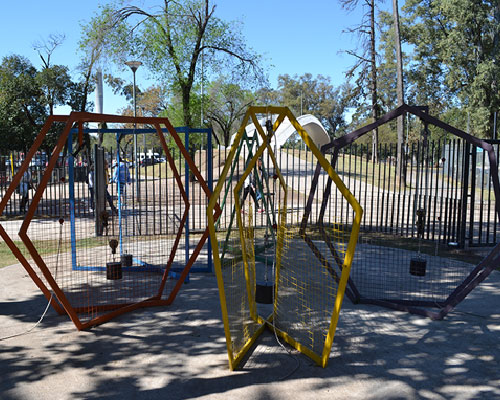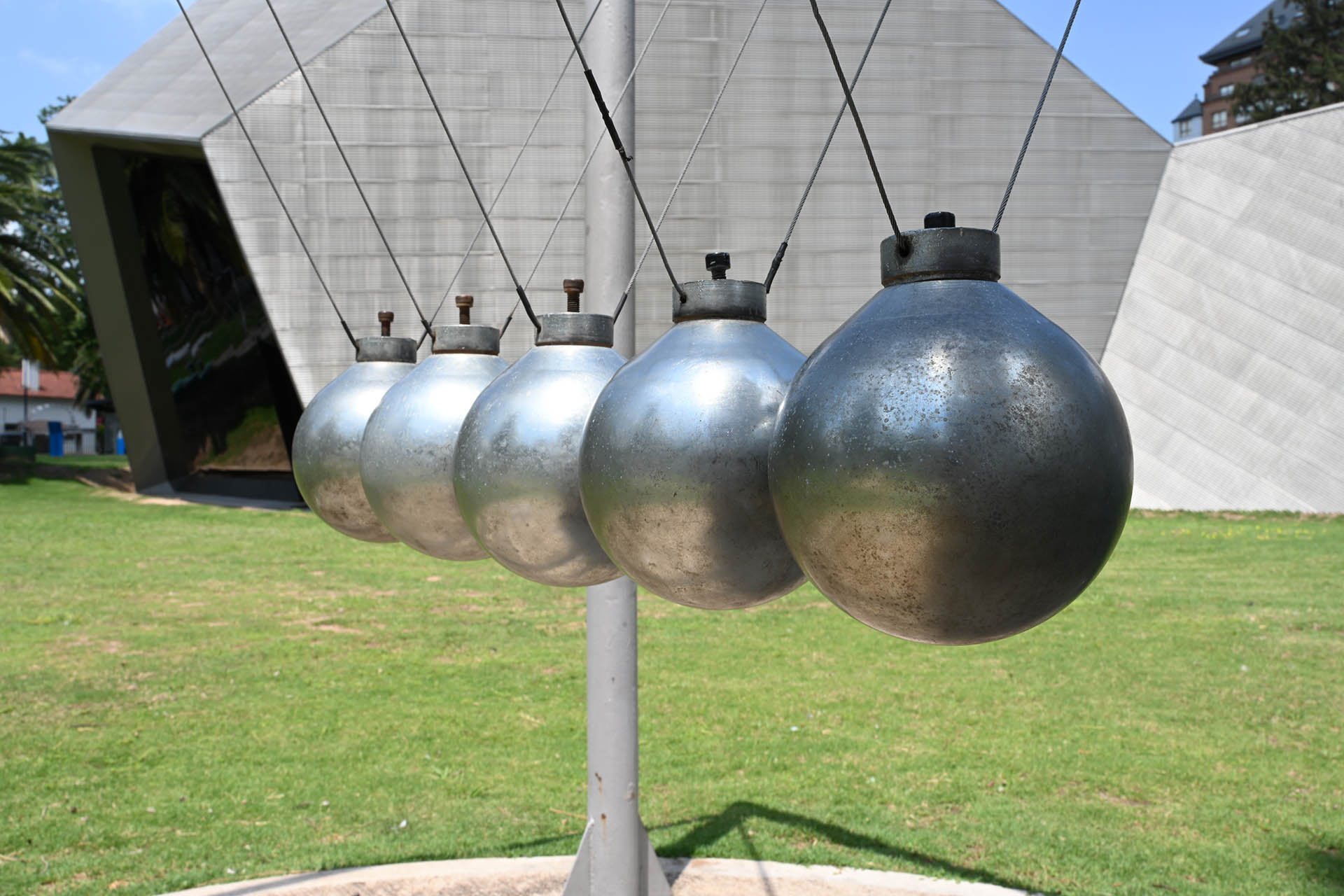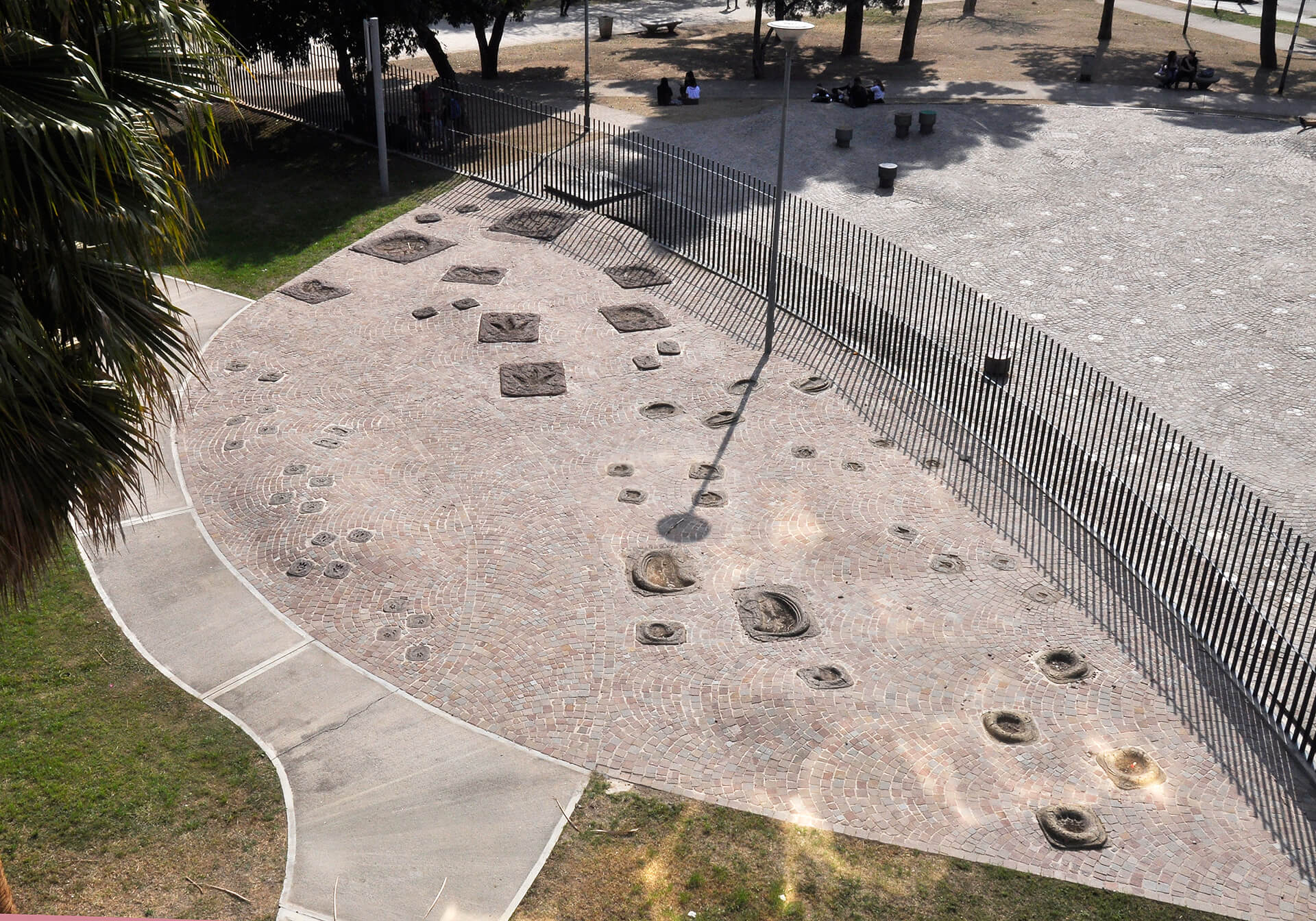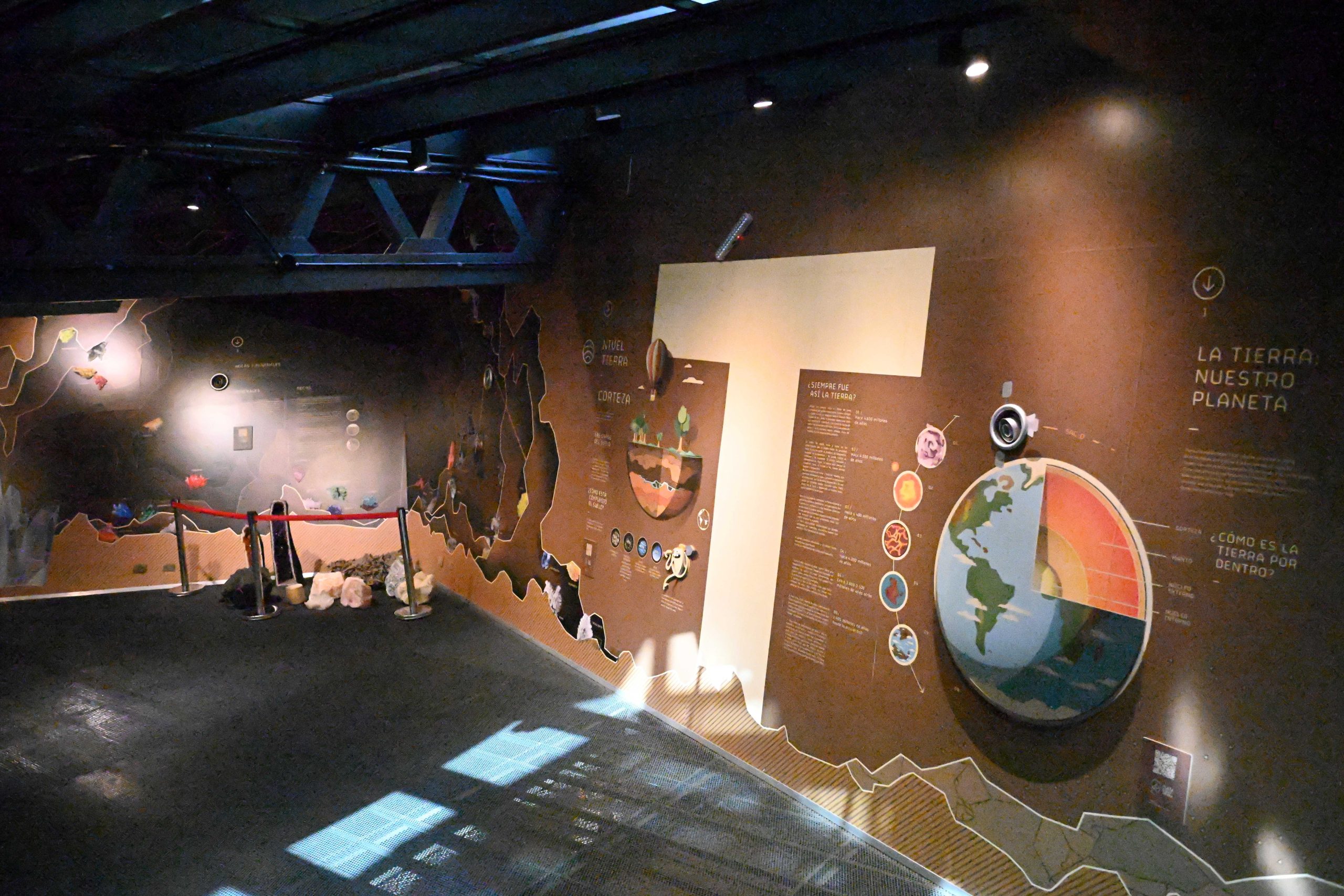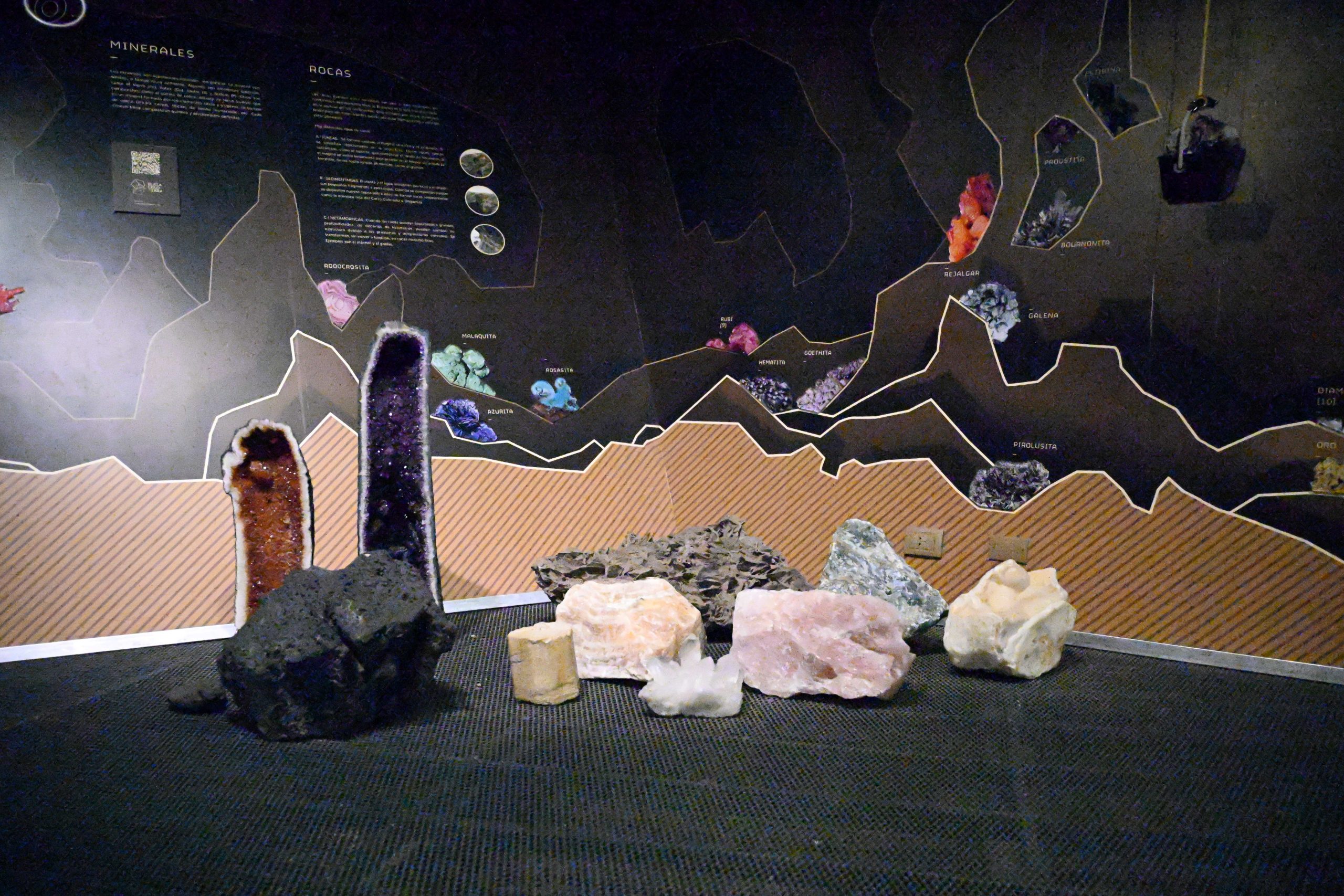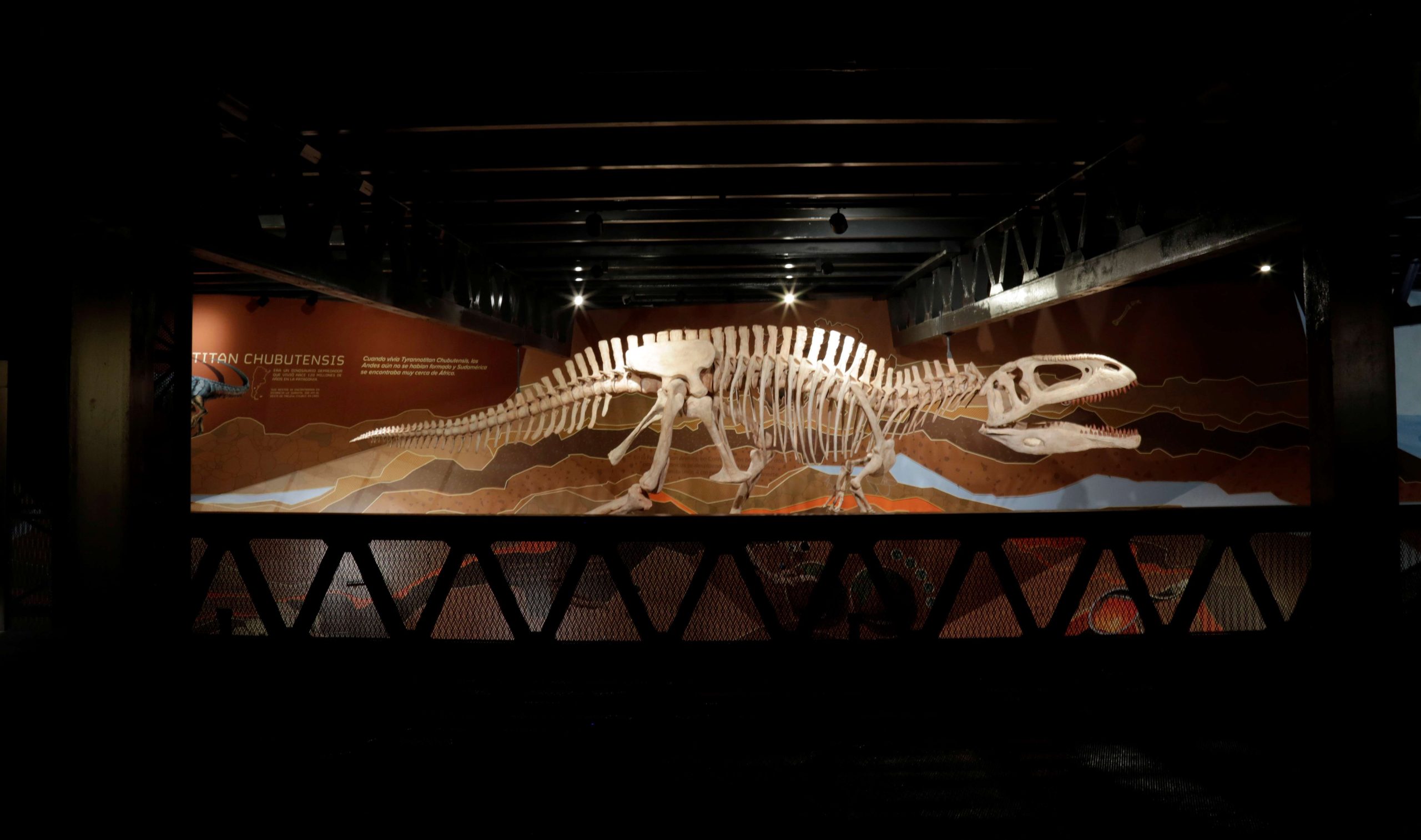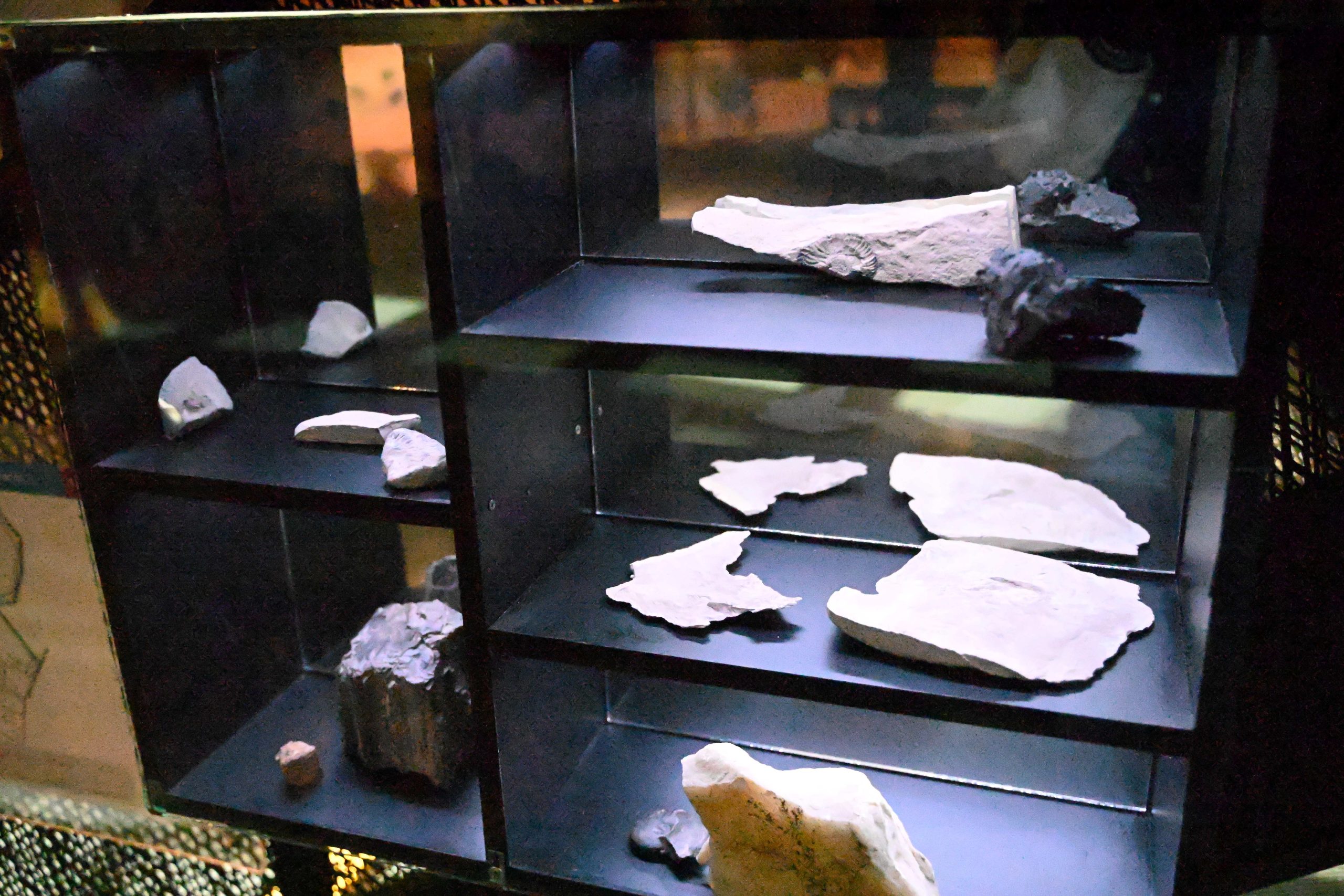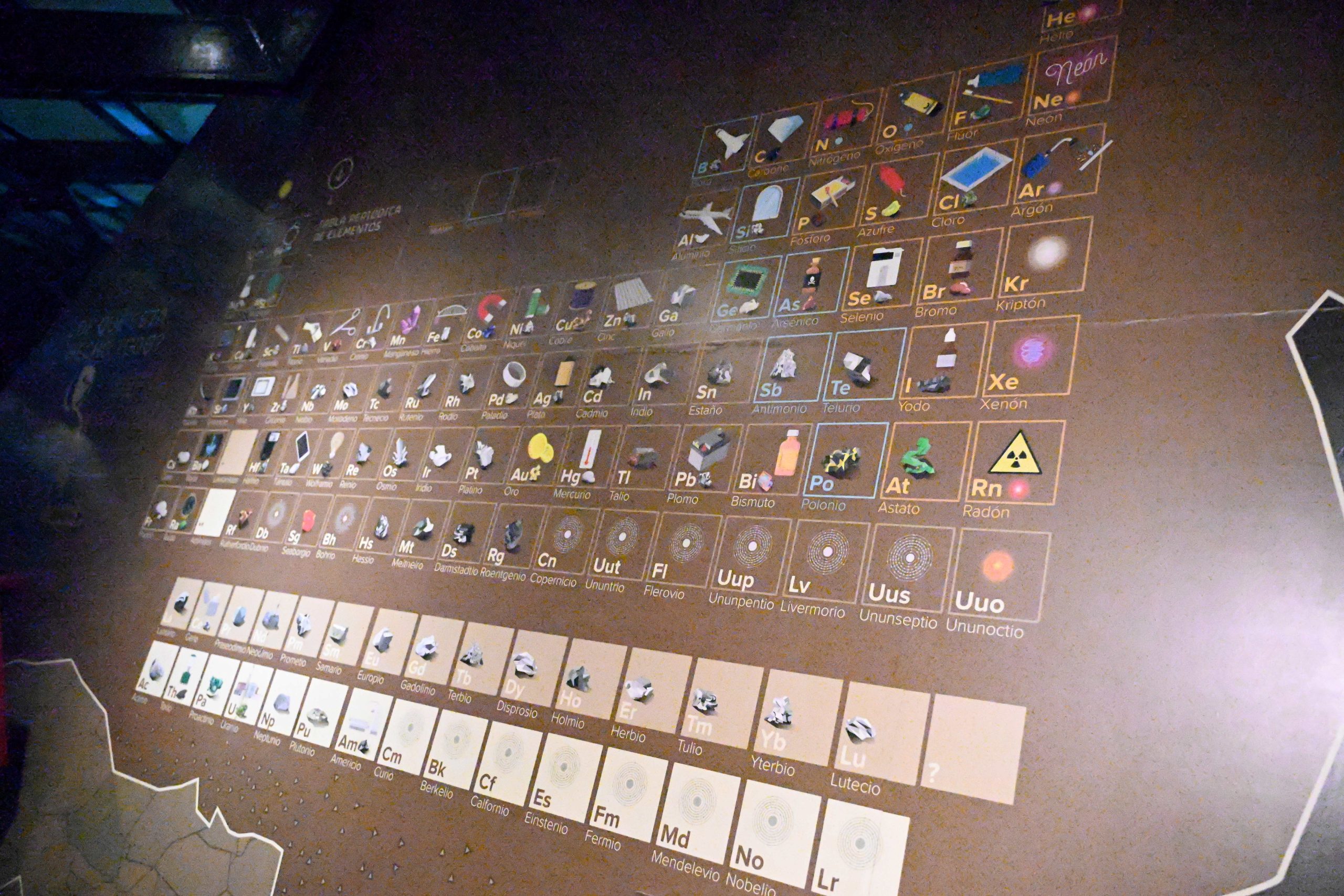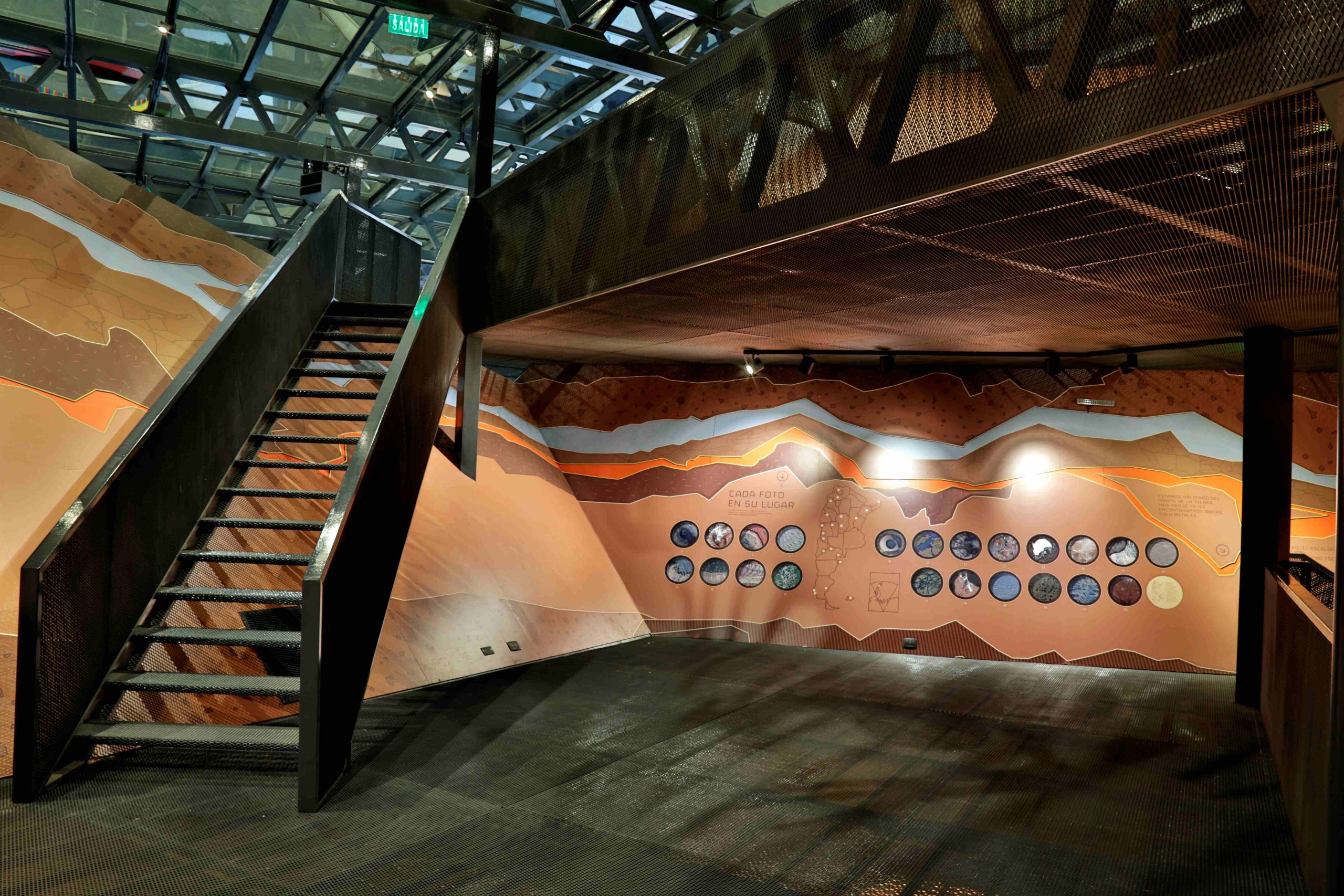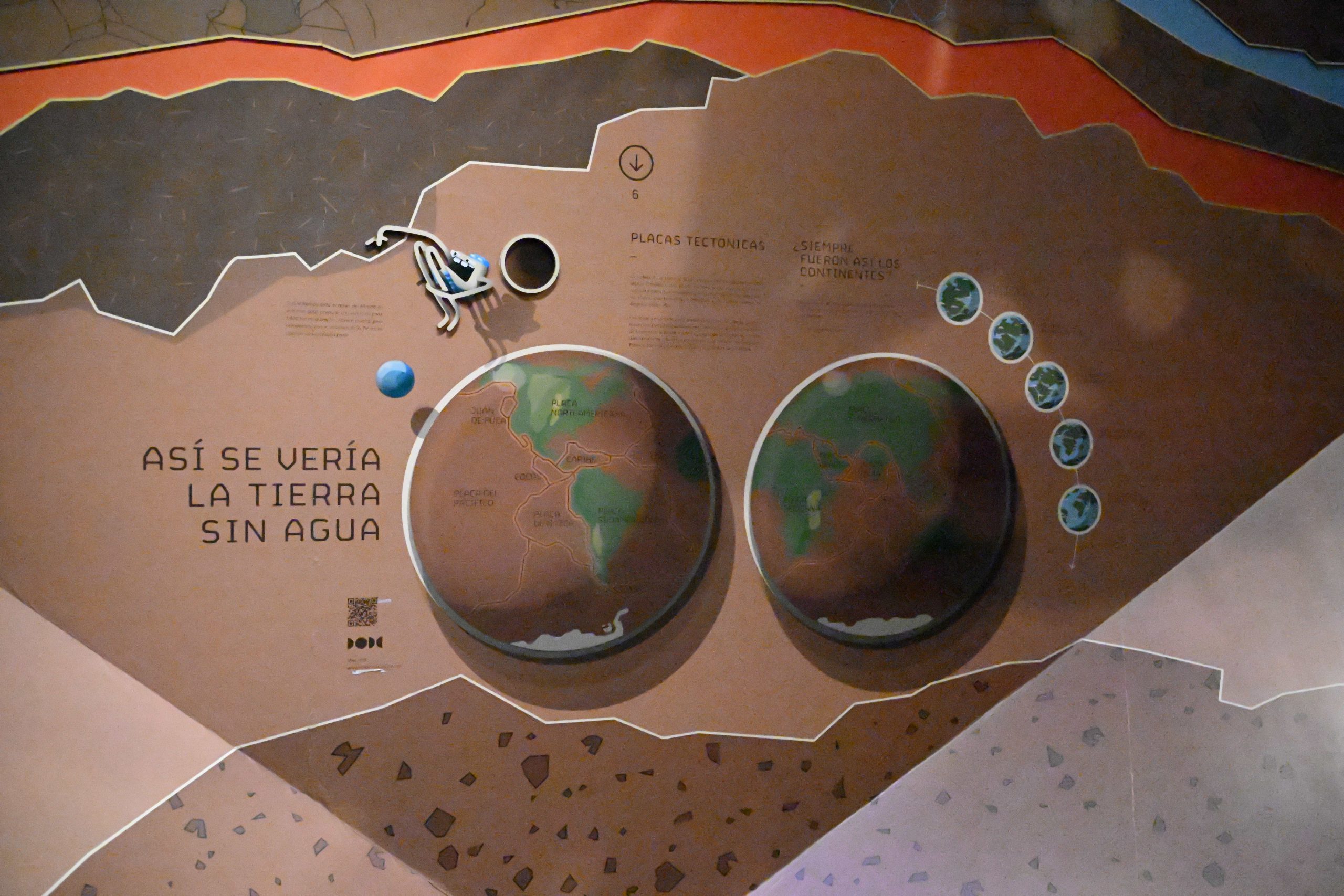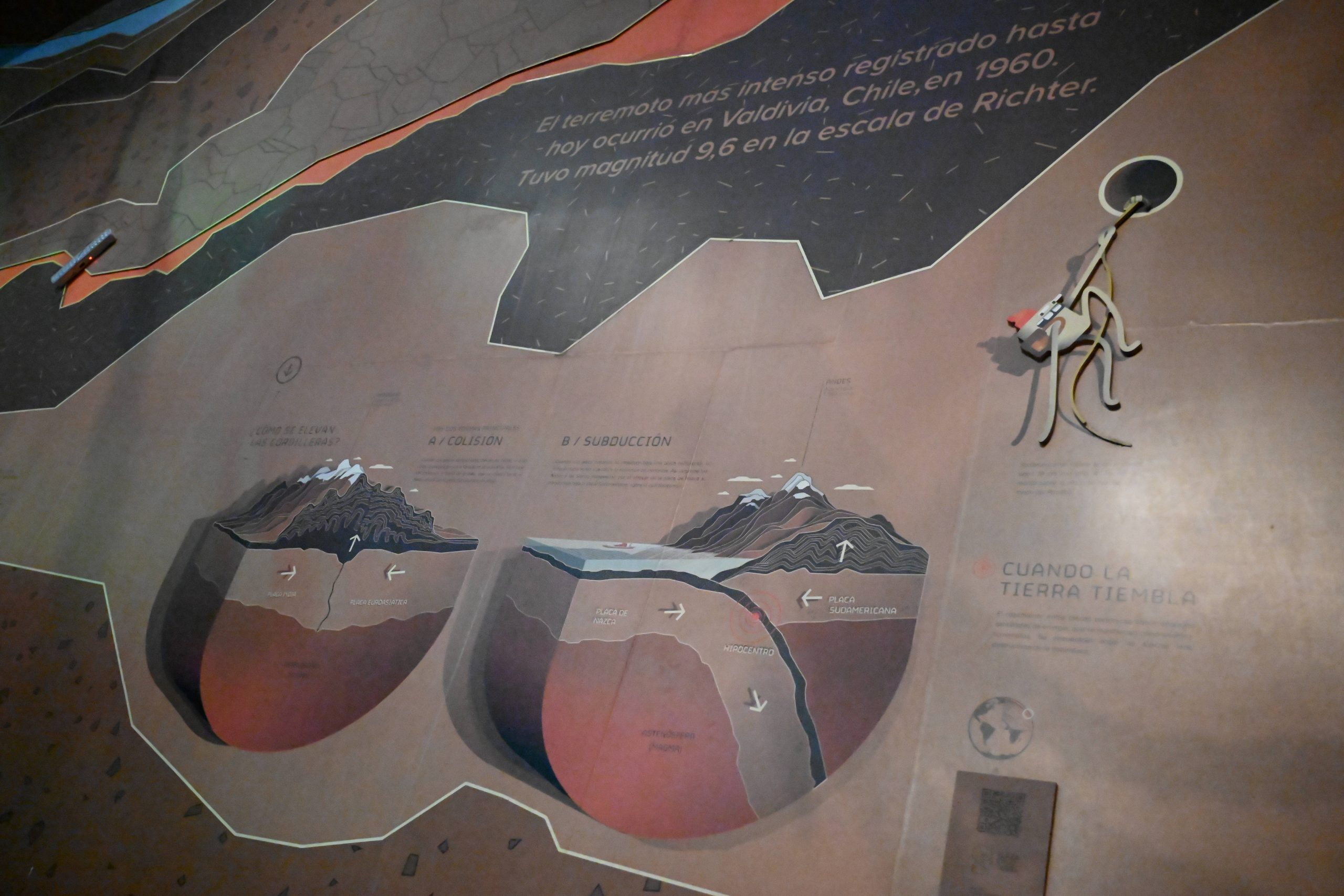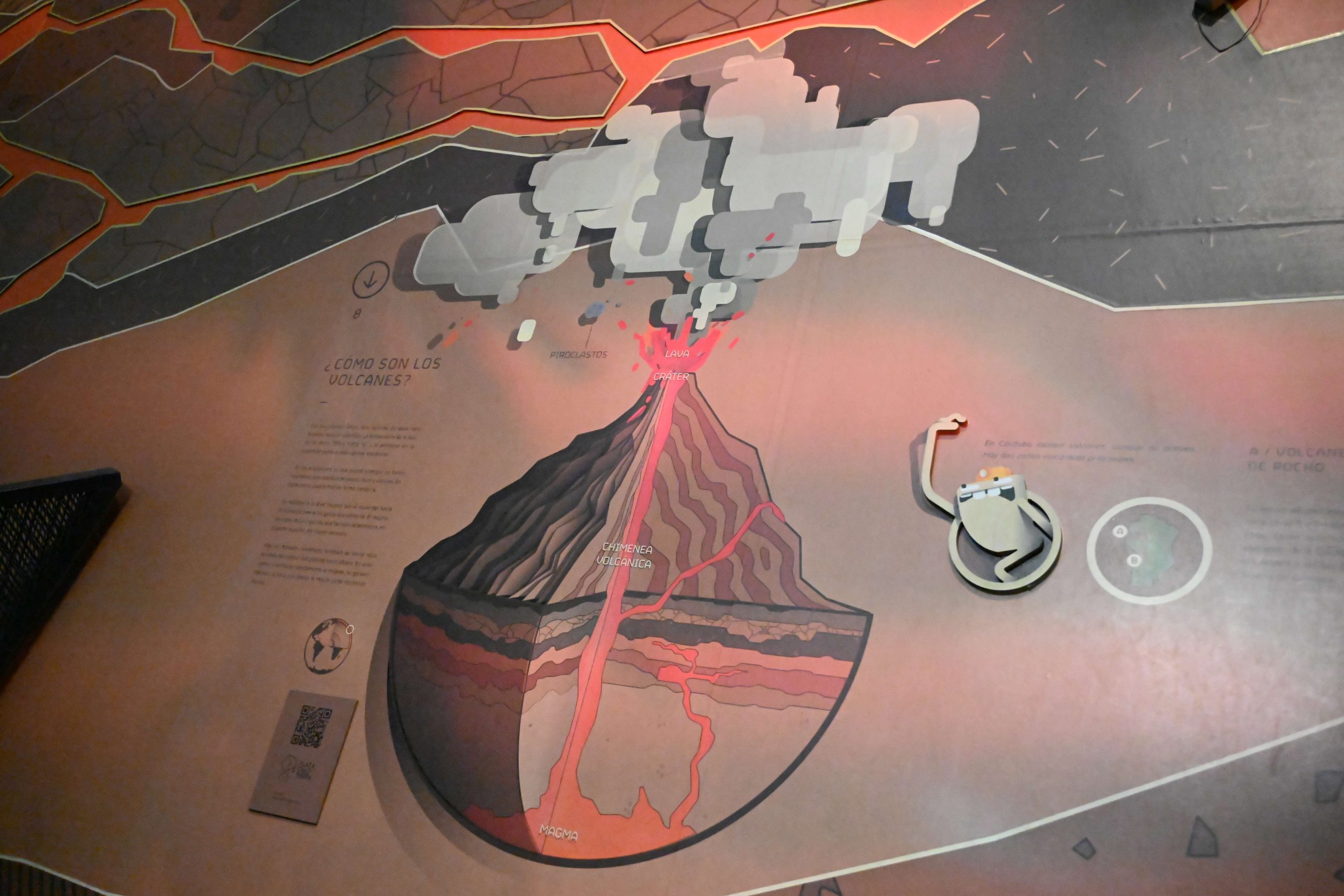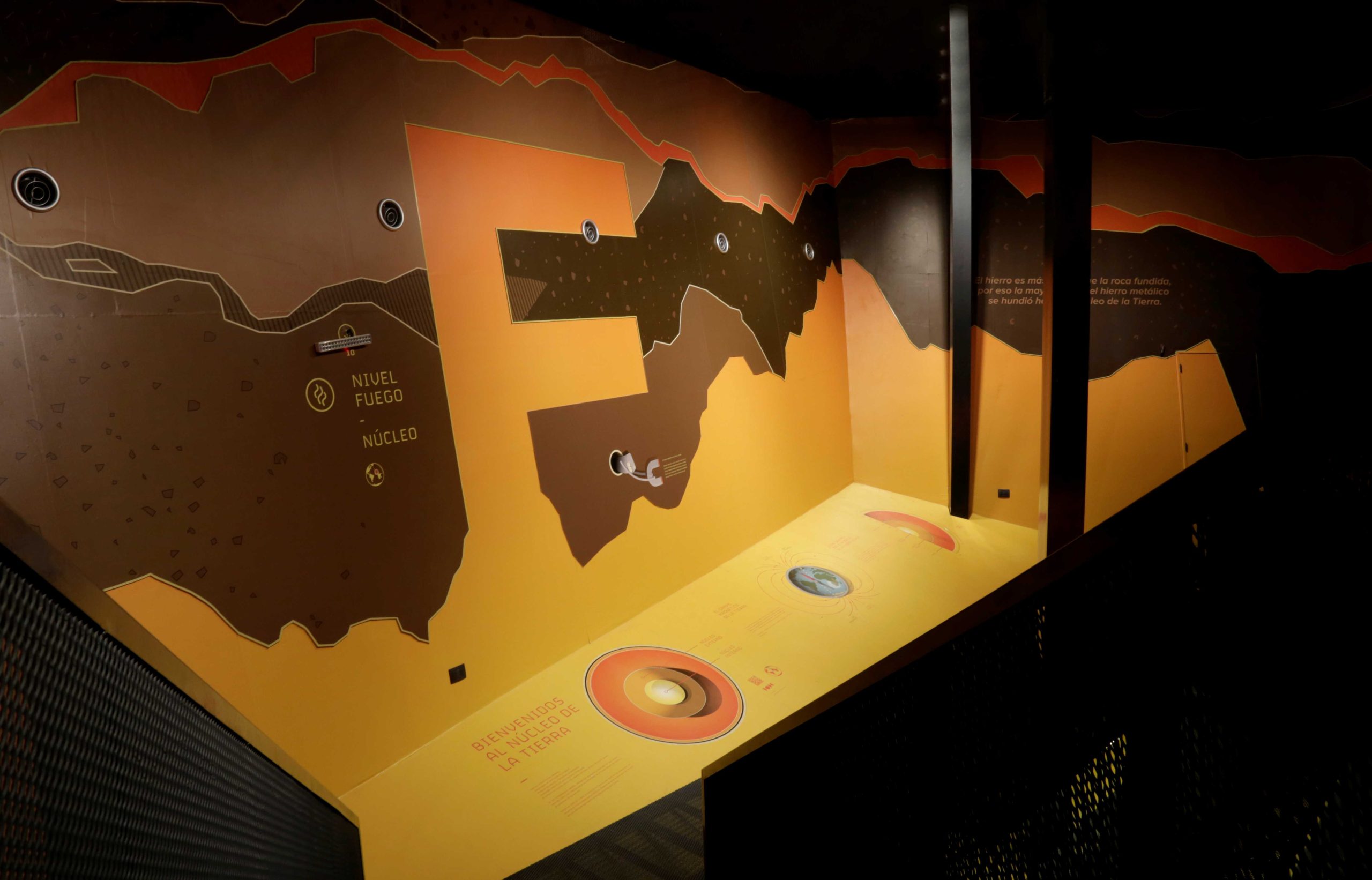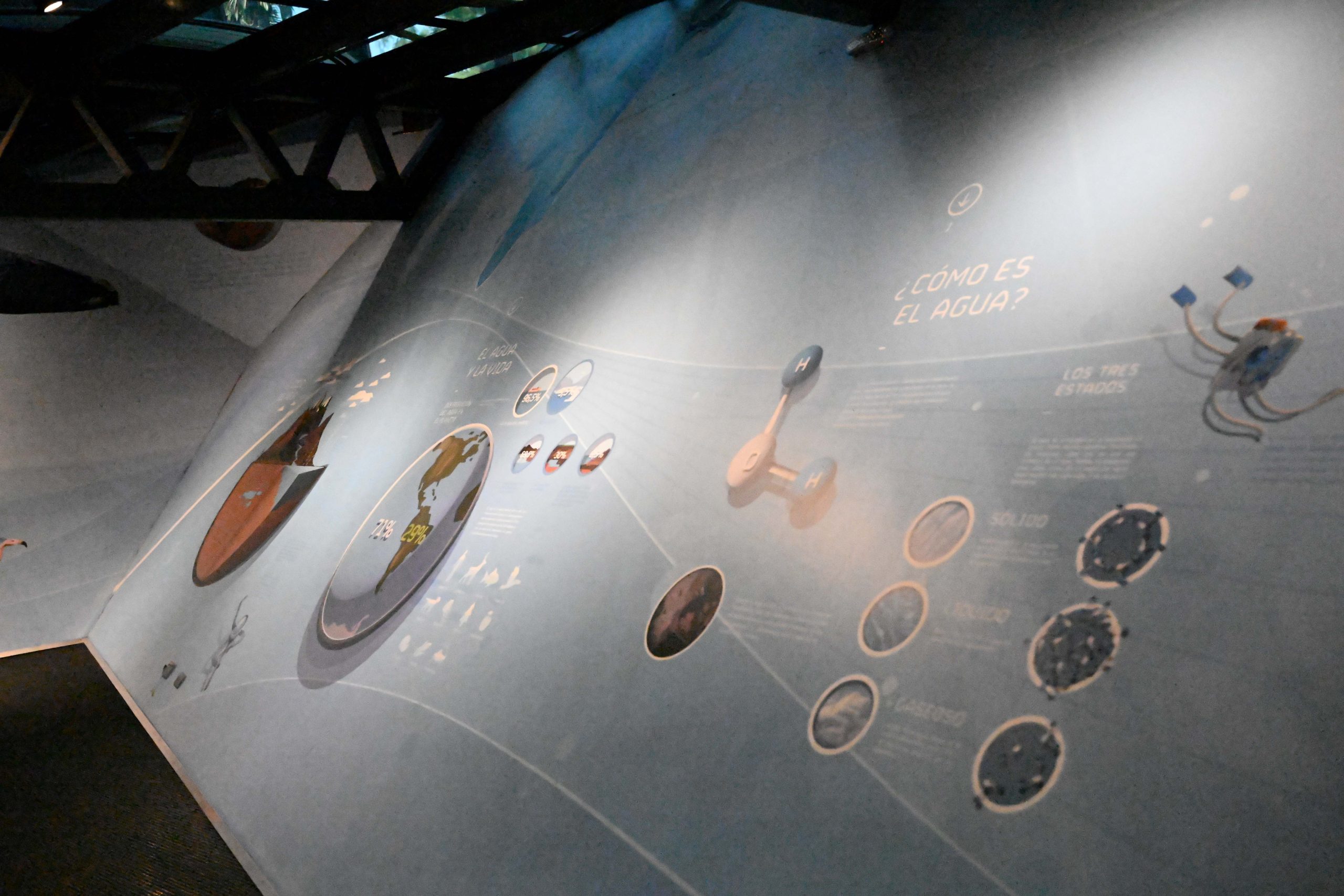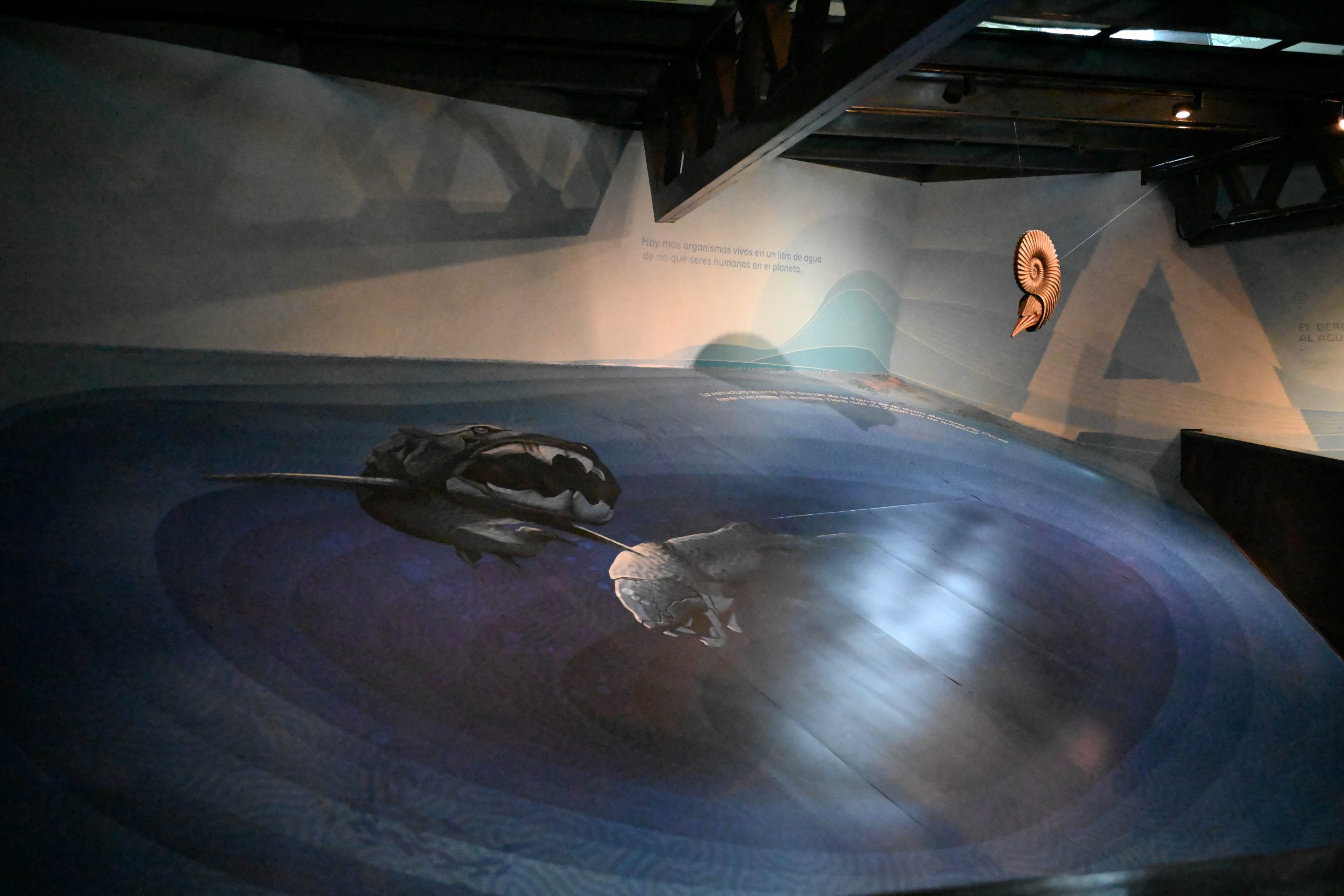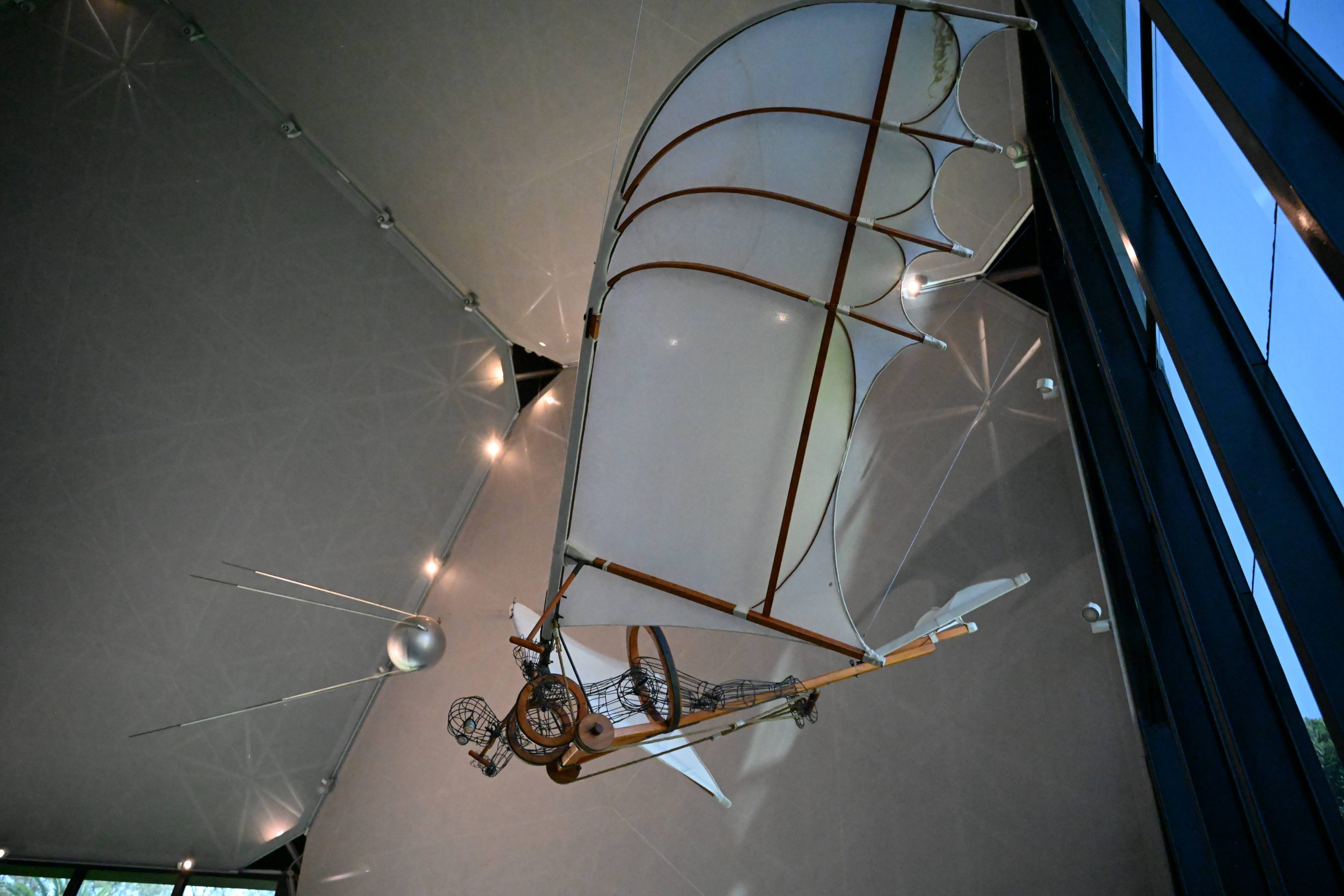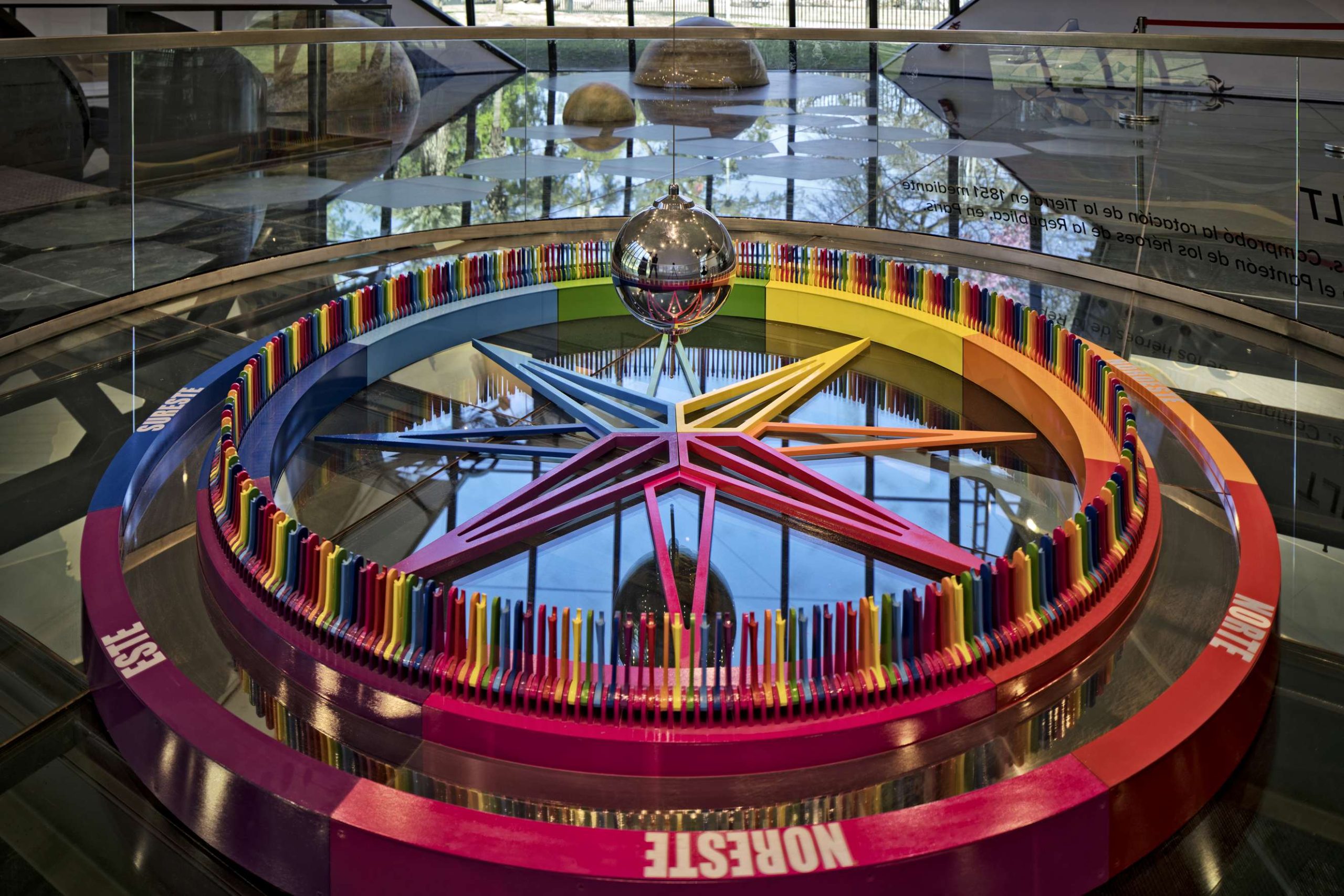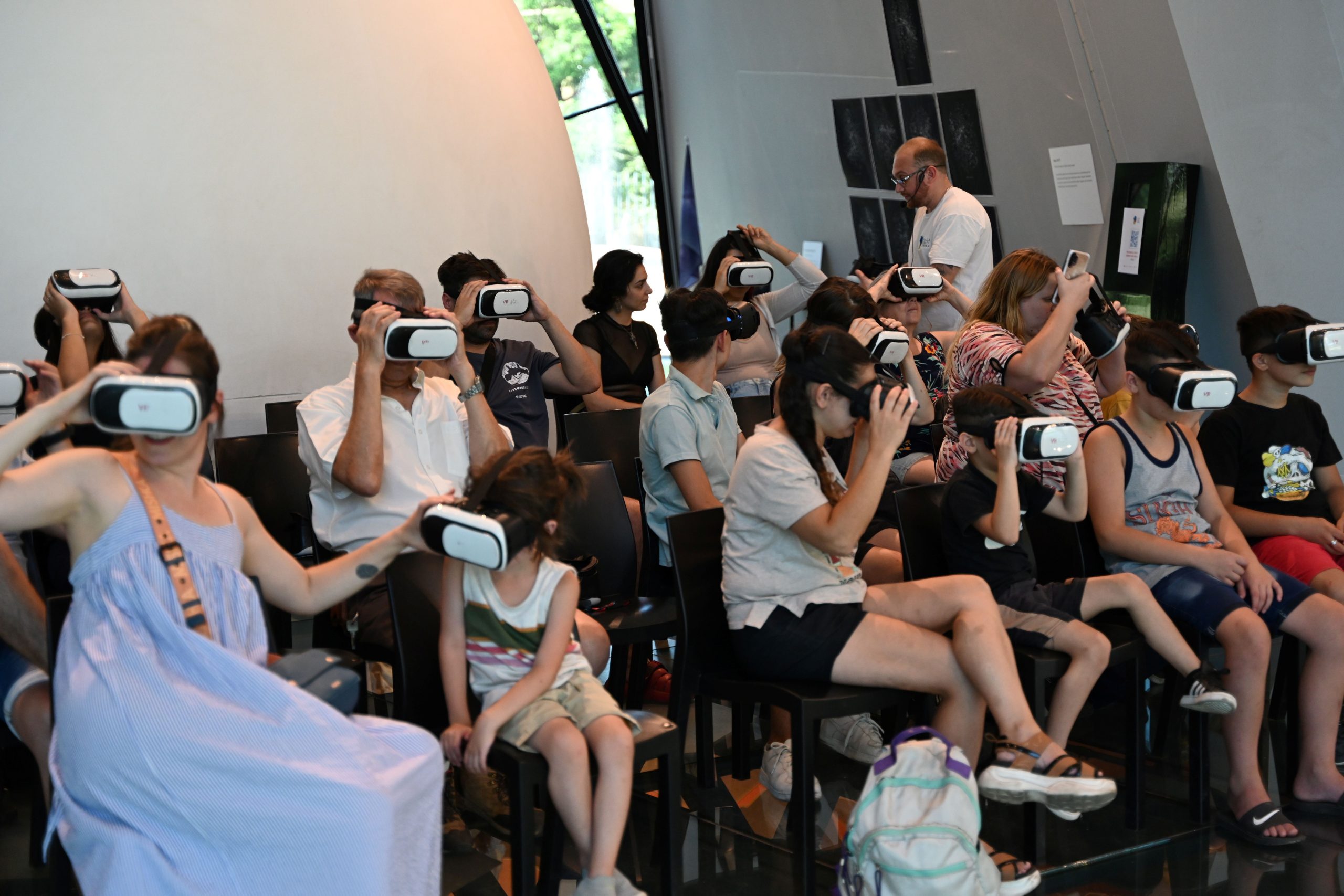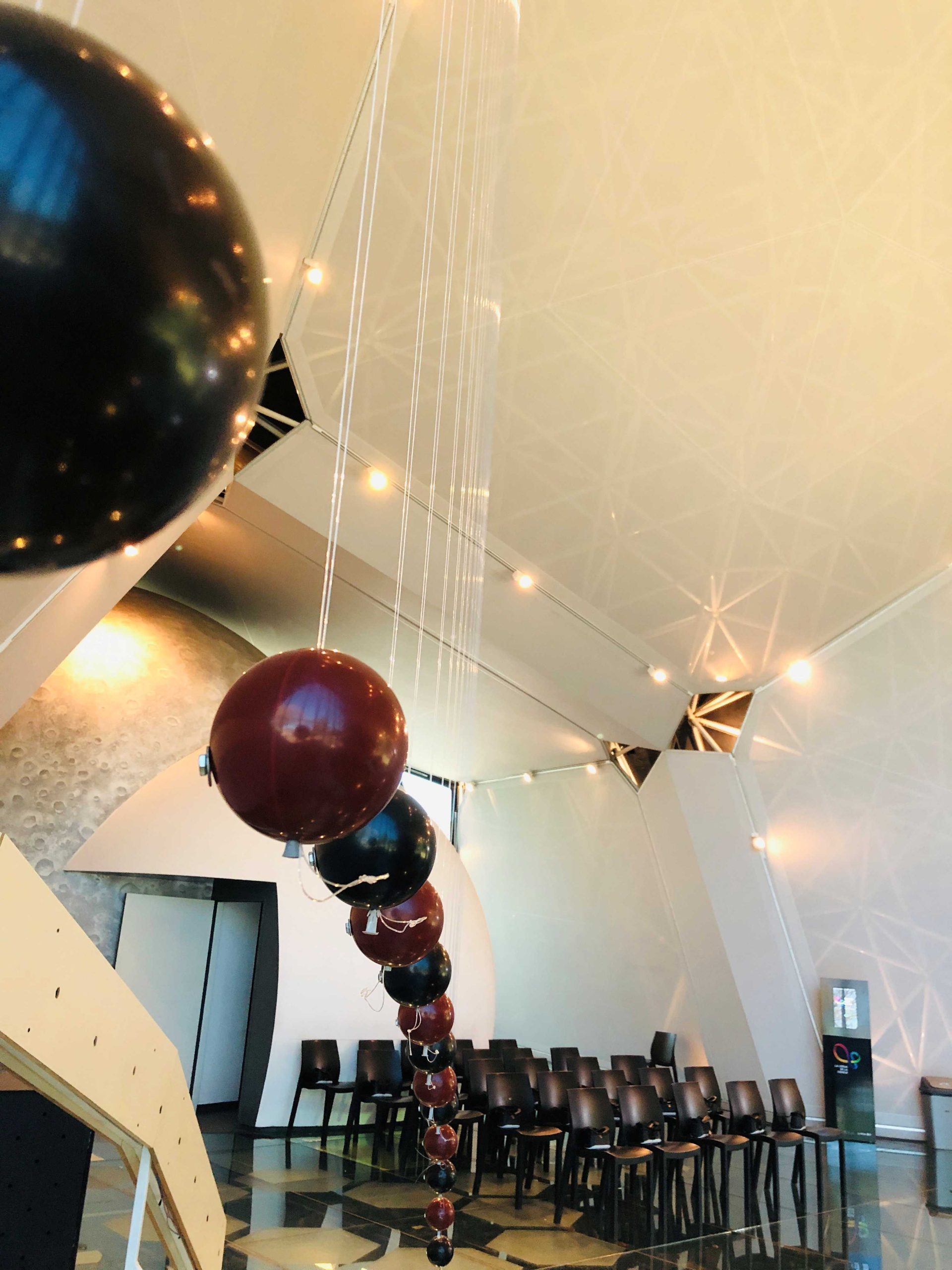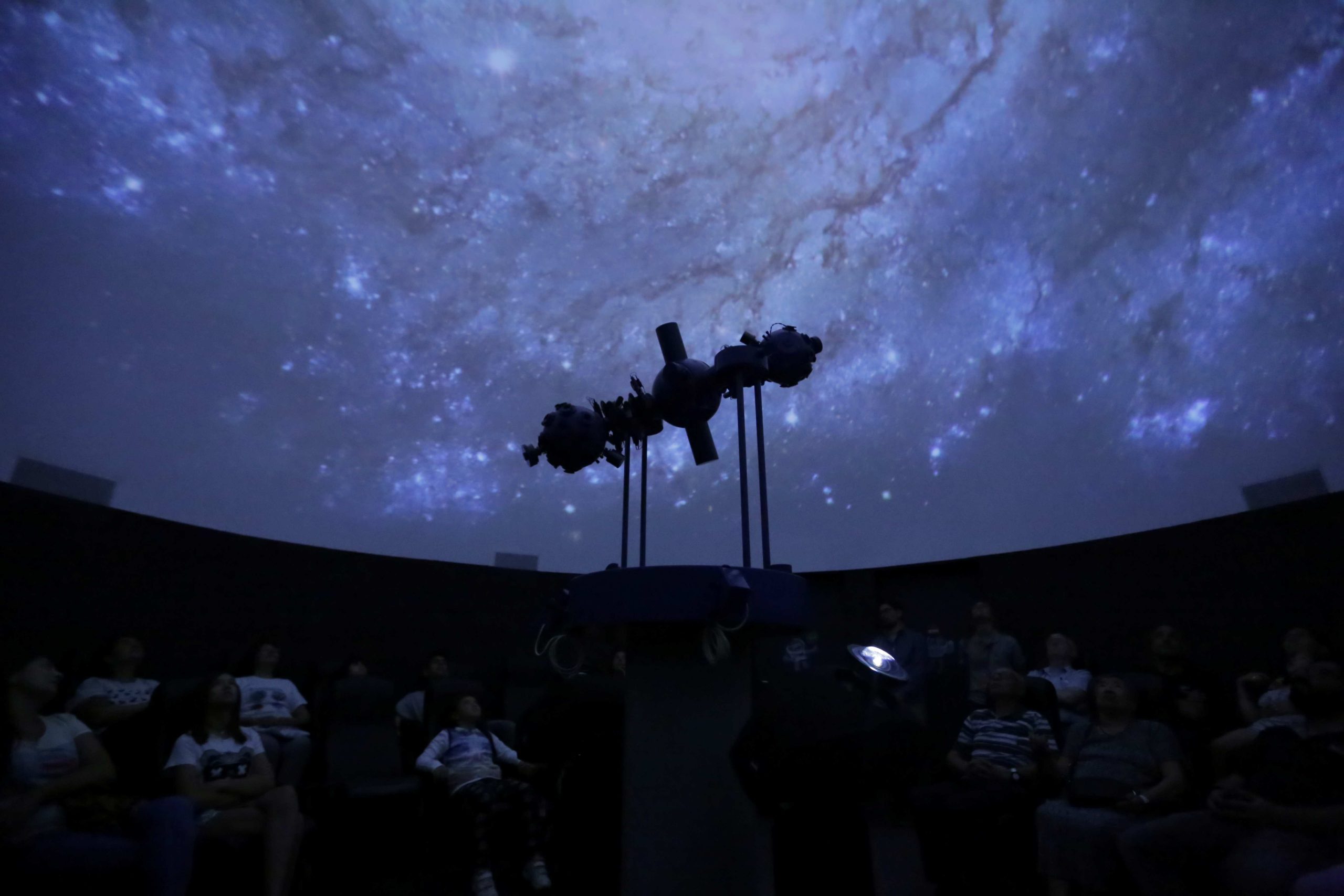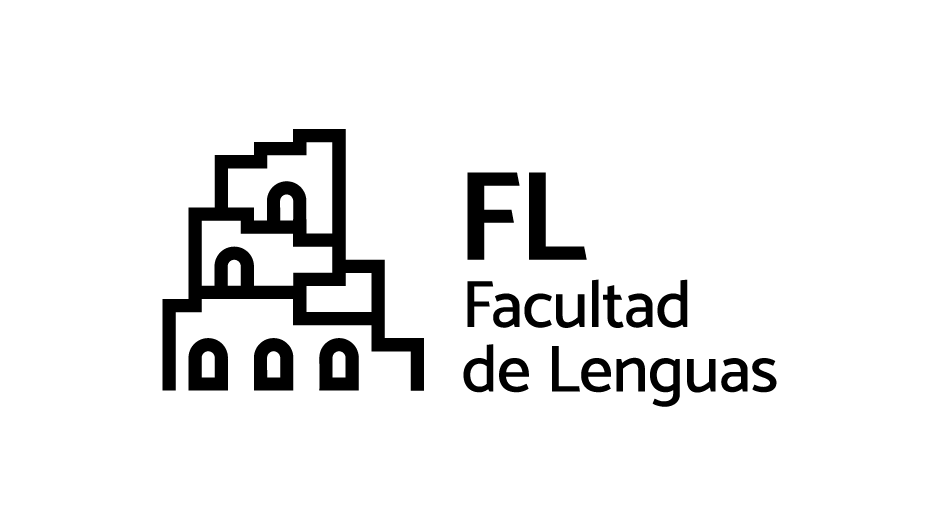In the Footprint Park, ichnite representations, that is, fossil footprints of prehistoric animals, can be found. Here, these ichnites belong to animals that lived in South America, and other footprints of living animals are represented.
We invite you to come and stand near the footprints to learn about each one of them. Please, do not step on them because they can break.
The footprints in pink correspond to dinosaurs that lived during the Mesozoic Era, in what we now know as Latin America.
Among them, the Argentinosaurus stands out. It is one of the largest known herbivorous dinosaurs. It could reach up to 40 m (0.2 mi) in length and an estimated weight of between 70 and 80 t (or 154,323.58 lb and 176,369.81 lb). Its extremely long neck made it possible for this dinosaur to access high vegetation, feeding on treetops.
Another remarkable specimen is the Giganotosaurus carolinii, a carnivorous dinosaur that is also among the largest of its kind. This predator had powerful jaws with sharp teeth and a robust body structure, making it a very efficient hunter. It is estimated that it reached up to 15 m (0.01 mi) in length and weighed around 7 t (15,432.36 lb).
Footprints of an ornithopod dinosaur are also represented here. Ornithopods were a group of herbivores characterized by their horny beak, short neck, and three-toed feet, similar to those of birds.
Among the medium-sized carnivores, we have the Herrerasaurus, a medium-sized bipedal dinosaur with curved, pointed teeth, short arms, and hands with claws, adapted for holding and tearing its prey.
Another animal represented in the park is the Eoraptor, a small carnivorous dinosaur of approximately 1 m (3.28 ft) long, which fed on reptiles, small mammals, and insects.
Lastly, a representation of a Pterosaur has also been included. It was a flying reptile that was not a dinosaur but lived alongside them. It was characterized by membrane wings and a light skeleton with hollow bones, which enabled it to fly with great efficiency. Their diet was varied: from insects and fish to small land animals.
Continuing the tour, we find representations of footprints belonging to animals that lived in the Cenozoic Era, during which the large mammals that inhabited this region emerged after the extinction of the dinosaurs. This fauna, known as South American megafauna, consisted of large animals that populated the territories that today correspond to Argentina.
One of the most emblematic was the Glyptodon, an armored herbivorous mammal, related to today’s armadillos. The Glyptodon´s body was protected by a rounded shell, formed by bony plates, and it had short limbs adapted to support its heavy weight. Some specimens reached up to 3 m (9.84 ft) in length and weighed over a ton. Its appearance resembled that of a tortoise, although it was a mammal.
Another giant creature of this era was the Megatherium, a ground sloth of huge proportions. It had a very robust bony structure, with a wide pelvis, and a muscular tail used as a third point of support to stand up. Thus, it was able to support its huge body on its hind legs and reach tall branches with its long arms and curved claws. It reached up to over 6 m (19.69 ft) in length and weighed over 3 t (6,613.87 lb).
The Macrauchenia was another typical inhabitant of this era. It had a particular appearance, resembling a humpless camel, with a long neck and a short snout. It measured around 3 m (9.84 ft) in length, 2 m (6.56 ft) in height, and could weigh up to 1,500 kg (3,306.93 lb). It was a herbivore that fed on grassland and floodplain areas. This specimen was native to South America and extensively inhabited the prehistoric Pampas plain, covering the regions that today include the provinces of Buenos Aires, Córdoba, Santa Fe, La Pampa, Entre Ríos, and San Luis. It had contact with early humans, which probably contributed to its extinction.
Also represented is the Paleolama, an extinct camelid of approximately 2 m (6.56 ft) long and tall, with herbivorous habits. It is believed that its extinction was related to human hunting.
Lastly, we have footprints of the Stegomastodon, a large herbivorous mammal related to the modern elephant. It was around 3 m (9.84 ft) tall and weighed more than 5 t (11,023.11 lb). Its diet was based mainly on grass, although it also fed on tree sprouts and various vegetables found in its habitat.
As we approach the pavilion, we find footprints of living animals, some of which are endangered.
Towards the end of the tour, we find representations of footprints of living animals, some of them endangered. These animals are part of South American wildlife, and many live in protected nature areas of Northern and Central Argentina.
One that stands out among them is the Aguará Guazú, the largest South American canid. It has a slender figure, and long legs adapted to move in tall grassland areas. It is of a reddish-orange color and has a characteristic dark mane on the neck and white patches on the throat, ears, and tail. It reaches a length of approximately 1.40 m (4.59 ft) and weighs around 25 kg (55.12 lb). It is a timid and solitary animal of nocturnal and crepuscular habits that feeds on small vertebrates, fruits, and insects.
We also have the Yaguareté, the largest American feline. It is a solitary, strong, and stealthy hunter. It has a strong body with yellow fur covered with black spots forming rosettes. Males can reach up to 1.8 m (5.91 ft) in length and weigh around 80 kg (176.37 lb). At present, it is critically endangered in Argentina, with a very restricted presence in the northwest of the country.
Another animal is the Tatú Carreta, the largest of the armadillos. It can reach up to 1.5 m (4.92 ft) in length and is distinguished by a body covered with bony plates, an elongated face, and large front claws suited for digging deep caves. It is a solitary and nocturnal animal that feeds on insects, larvae, and other small invertebrates.
The Puma‘s footprints are also represented. This large feline has a slender and agile shape, with a big head, round ears, and a long tail. Adult pumas present short and uniform fur that varies from red to gray in color. These are adaptable predators, capable of inhabiting mountains or plains, and feed on medium-sized to large mammals, like guanacos, deer and rheas.
Last but not least, we have the footprints of a rhea, the largest South American bird. In Argentina, two of these species coexist: the common rhea and the Choique. The former can reach up to 1.8 m (5.91 ft) in height and weigh up to 40 kg (88.18 lb), while the latter is smaller, reaching up to 1.1 m (3.61 ft) in height and weighing up to 25 kg (55,12 lb). It has long and strong legs suitable for running and can reach a speed of up to 60 km/h (37.28 mph). Their diet is omnivorous, consisting of seeds, fruits, insects, and small vertebrates.
